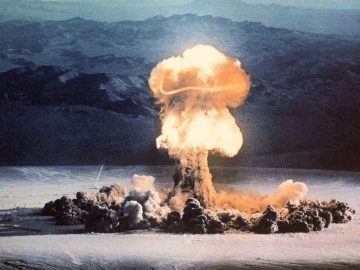Bruno Tertrais at the website of La Fondation pour la Recherche Stratégique:
 Why have nuclear weapons not been used since 1945? The more time passes, the more the question becomes relevant and even puzzling for pessimists. Most strategists of the 1960s would be stunned to hear that as of 2017, there still has yet to be another nuclear use in anger. The prospects of a “nuclear weapons ban” or recurring proposals for “de-alerting”—instituting changes that can lengthen the time required to actually use the weapons—make the question even more relevant. Has mankind really stood “on the brink” several times since Nagasaki, and have we avoided nuclear catastrophe mostly because of pure “luck”? Recent books, articles, and reports, as well as two wide-audience documentaries, say yes.
Why have nuclear weapons not been used since 1945? The more time passes, the more the question becomes relevant and even puzzling for pessimists. Most strategists of the 1960s would be stunned to hear that as of 2017, there still has yet to be another nuclear use in anger. The prospects of a “nuclear weapons ban” or recurring proposals for “de-alerting”—instituting changes that can lengthen the time required to actually use the weapons—make the question even more relevant. Has mankind really stood “on the brink” several times since Nagasaki, and have we avoided nuclear catastrophe mostly because of pure “luck”? Recent books, articles, and reports, as well as two wide-audience documentaries, say yes.
This is not the case. The absence of any deliberate nuclear explosion (except for testing) since 1945 can simply be explained by human prudence and the efficiency of mechanisms devoted to the guardianship of nuclear weapons. Banning nuclear weapons may or may not be a good idea. But it should not be based on the myth of an inherently and permanently high risk of nuclear use.
The analysis that follows covers the deliberate use of nuclear weapons by a legitimate authority, either by error (“false alarm”) or not (“nuclear crisis”). It does not cover the risk of an accidental nuclear explosion, an unauthorized launch, or a terrorist act.3 It covers 37 different known episodes, including 25 alleged nuclear crises and twelve technical incidents, which have been mentioned in the literature to one degree or another as potentially dangerous.
More here.
